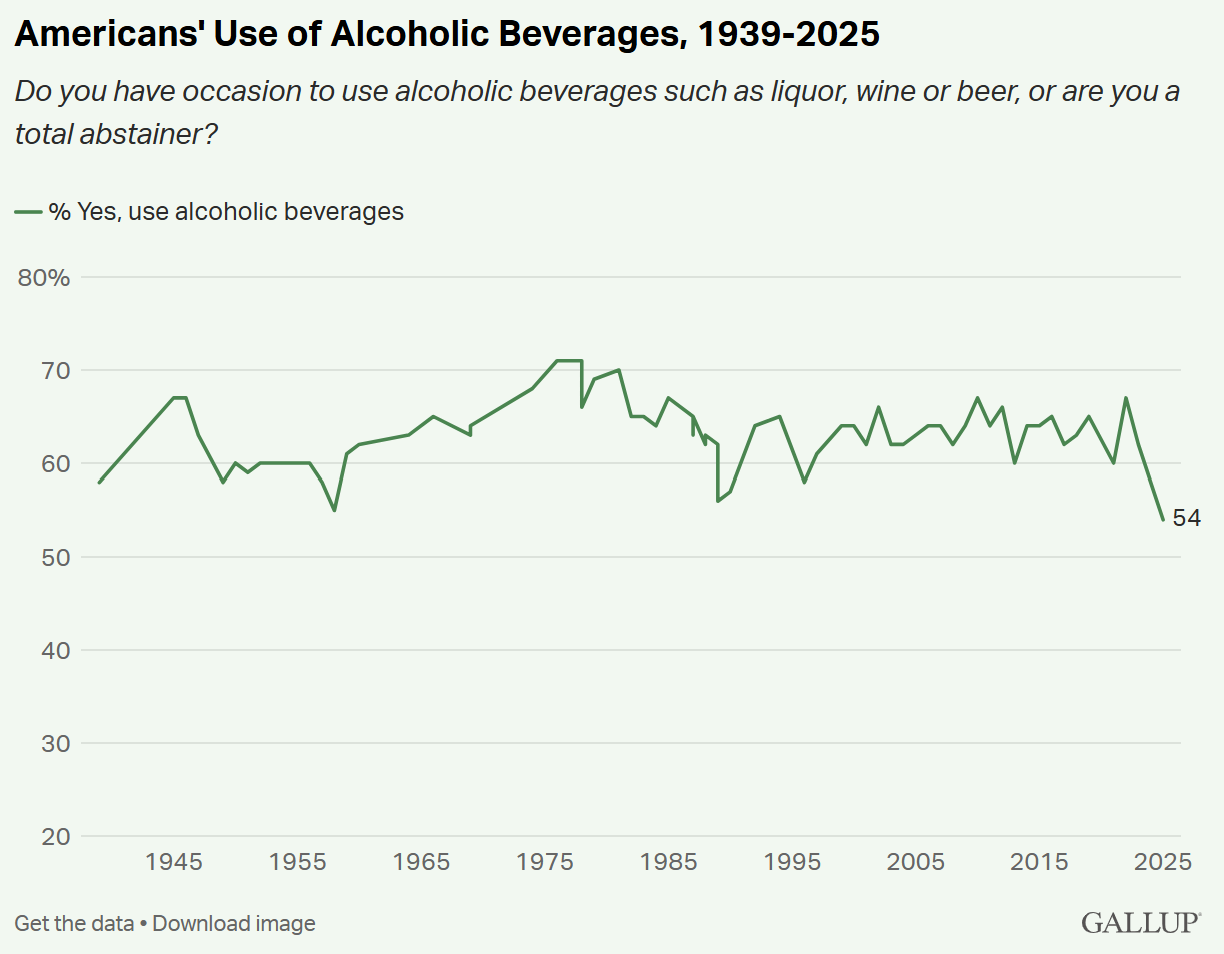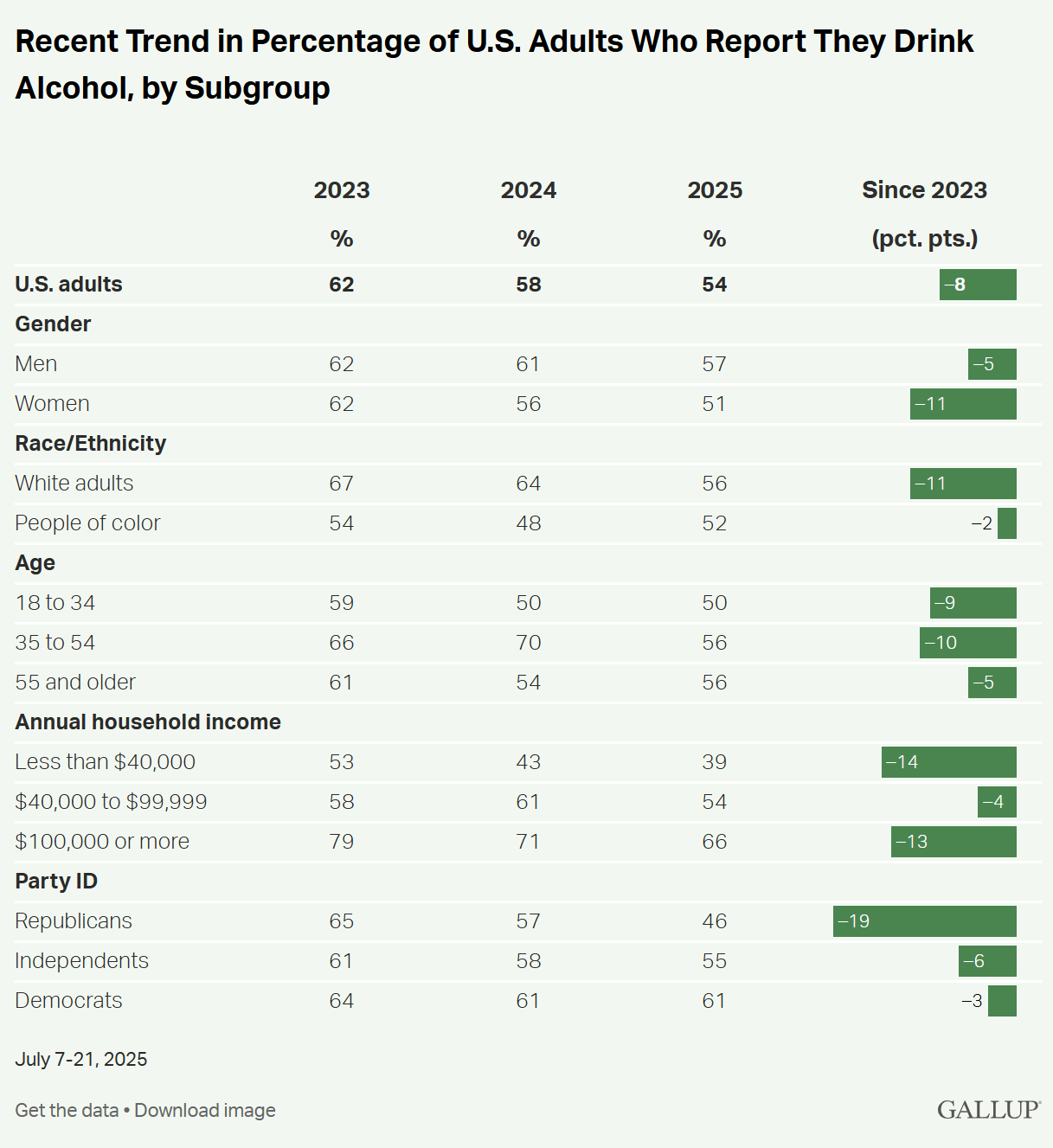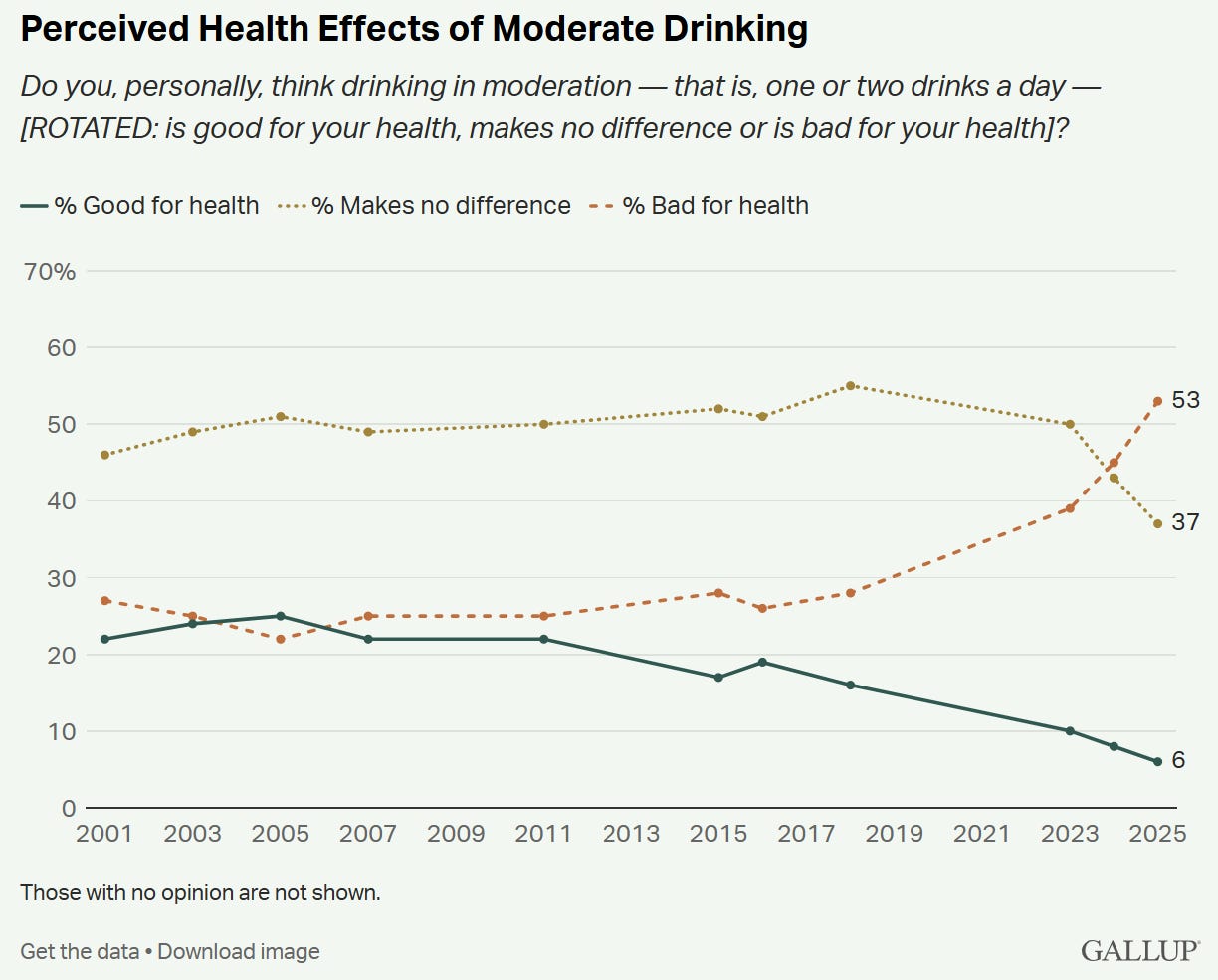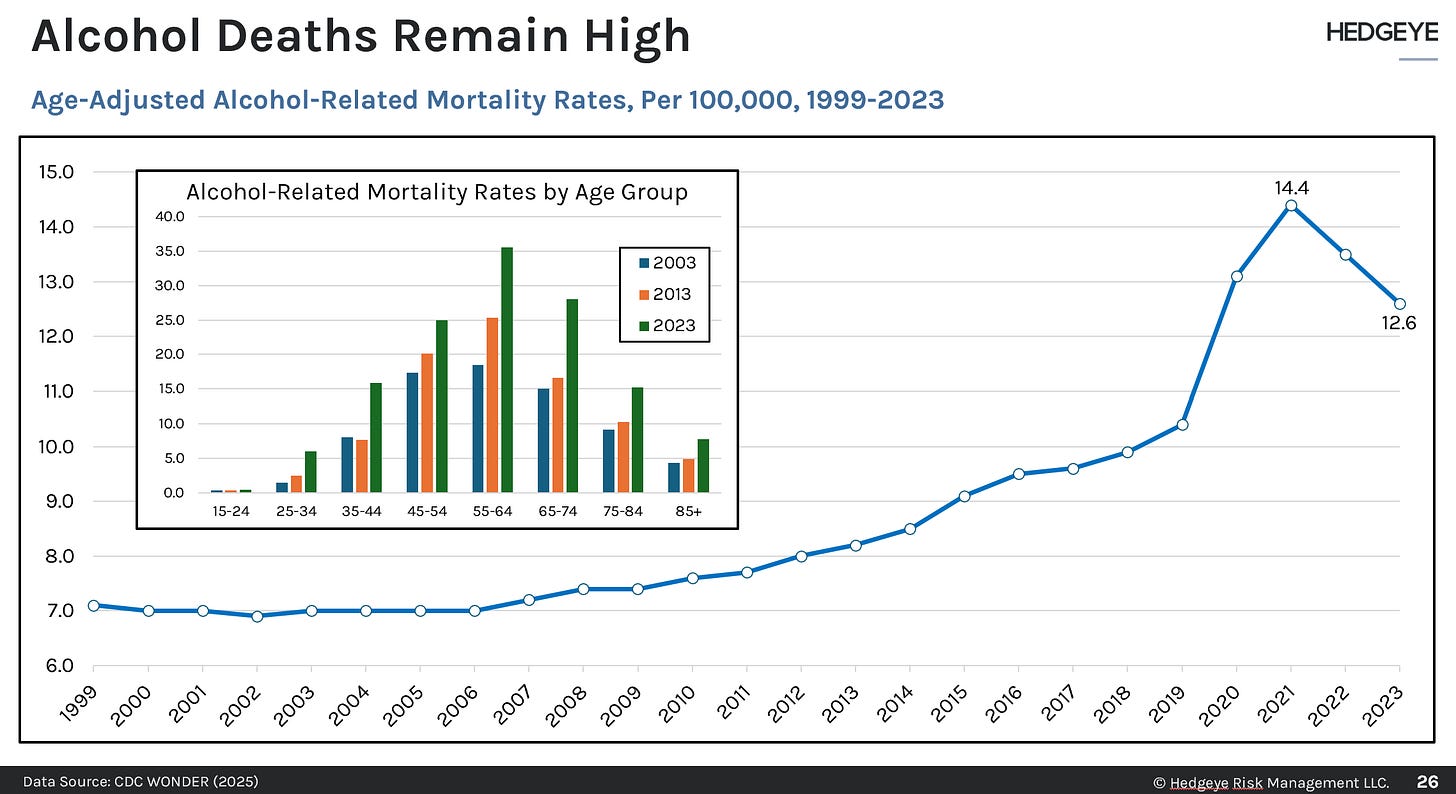The share of Americans consuming any alcohol has hit the lowest level since the Great Depression. This is primarily due to large recent declines among young people, women, and Republicans.
In my 2023 book, The Fourth Turning Is Here, I discussed the historical pattern of alcohol consumption. It tends to rise during a High, peak during an Awakening, and decline during an Unraveling. I predicted that consumption would remain low throughout our current Fourth Turning. A recent Gallup poll confirms the trend.
In 2025, only 54% of Americans say they occasionally drink alcohol. That’s a -4 percentage point decline since 2024, -9 percentage points below the historical average (1939-2024: 63%), and the lowest share that Gallup has ever recorded.
Let’s break down the results by demographic subgroups. Since 2023, the decline in drinking has been steeper among Homelanders and Millennials (-9 points) than older adults (-5 points). By gender, women (-11 points) reported a sharper decline than men (-5 points). And by political party, the biggest shift occurred among Republicans (-19 points), while Democrats registered only a slight decline (-3 points).
These results match other research we have conducted. Millennials and first-wave Homelanders are more risk-averse than older generations, particularly when it comes to substance use. (See “Where the Wild Things Aren’t.”)
As for Republicans, their shift aligns with the White House’s “Make America Healthy Again” campaign. Neither Trump nor RFK Jr. drinks, and a record 53% of Americans now say even moderate drinking is bad for health. (See “Americans Grow Wary of Alcohol.”)
If we look at recent trends by age, the rise in the share of Americans saying alcohol is bad for your health matches the rise in alcohol abstainers. Under age 35, the share of Americans saying that “drinking in moderation” is unhealthy has risen to 66%. Over age 55, it has risen to only 48%.
Some have suggested that alcohol use is falling because cannabis use is rising. (Recreational marijuana is now legal in about half of US states.) Gallup rejects this explanation. Yes, marijuana use has risen over the past ten years; the authors note, however, that it hasn’t risen much at all over the past four years, which is when the sharp drop in alcohol consumption happened.
Finally, let’s add a big caveat on all of these numbers. Alcohol consumption has experienced some big movements over the last several years. Everyone agrees that consumption shot up to very high levels during the Covid “cabin fever” years of 2020, 2021, and 2022. And the news that it has fallen since then is both plausible and welcome.
But we’ll need to see more data before we can conclude that society-wide alcohol consumption has indeed fallen to record lows.
One reason to be a bit skeptical is that the alcohol-related death rate, while indeed down from its peak in 2021, was still very high for pretty much every age bracket in 2023. (This is the latest year for which the CDC has mortality data; see “2025 US Demography Review.”) Alarmingly, the death rate among 35-to 44-year-olds in 2023 was roughly double what it was a decade ago. Among 65-to 74-year-olds, it was up roughly 80%.
If the drop in alcohol use observed by Gallup really happened and if use remains low over the next several years, it is likely that the mortality data will soon show a similar decline—with a lag to account for the delayed incidence of most deaths (due to specific liver diseases) associated with alcohol. That would be great news. It is also possible, however, that this year’s Gallup drop was a one-off. Or that the beneficial health effect of fewer people drinking is being offset by the negative health effect of more alcohol per drinker, or more dangerous binge-drinking practices among those who do. We’ll know soon enough.









Those who drink, drink heavy. Those are my thoughts for the increased alcohol related mortality rate combined with decreased overall alcohol use.
True, it seems like Gen X consumes a lot of alcohol. Even more now that they are in peak earning years.